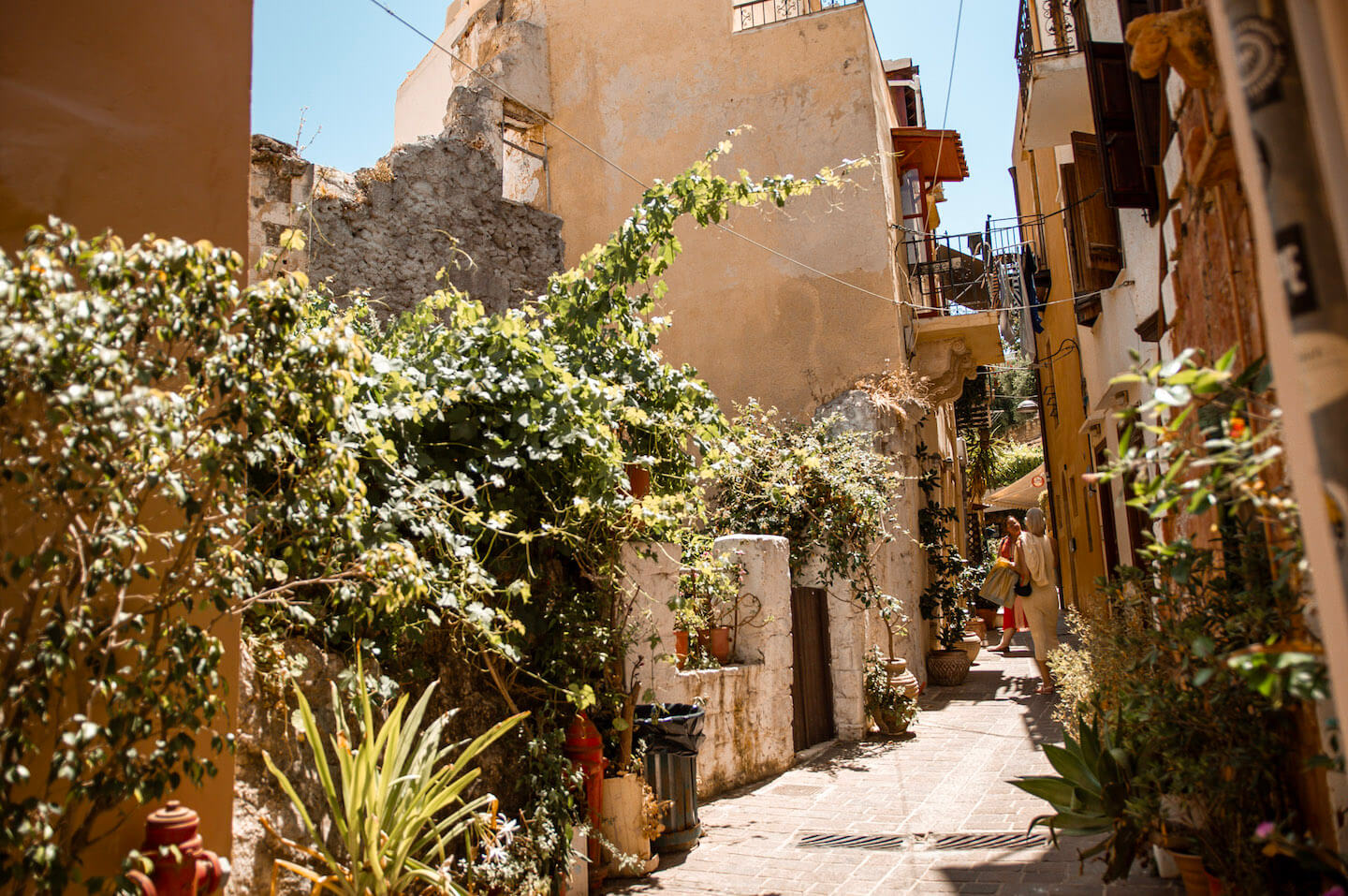Crete, the largest of the Greek islands, is a land steeped in history, culture, and natural beauty. Among its many enchanting features, the labyrinthine alleys of its old towns and villages stand out as pathways to the island’s past, offering a journey through time and tradition. These narrow, winding streets, lined with ancient stone buildings, vibrant bougainvillea, and bustling markets, invite visitors to get lost in their charm. This text explores the allure, history, and unique experiences of navigating the labyrinthine alleys of Crete, highlighting their significance and timeless appeal.
The Allure of Labyrinthine Alleys
The allure of Crete’s labyrinthine alleys lies in their ability to transport visitors into a different world. These ancient streets, often too narrow for cars, are best explored on foot, allowing travelers to immerse themselves in the sights, sounds, and scents of traditional Cretan life.
1. Visual Delight: The visual appeal of these alleys is undeniable. The cobblestone paths, whitewashed walls, and colorful doors and shutters create a picturesque setting that is both charming and timeless. Bougainvillea and other climbing plants add bursts of color, while the play of light and shadow enhances the atmosphere, making every turn a potential postcard moment.
2. Historical Echoes: Walking through these alleys, one can feel the echoes of history. The architecture, ranging from Venetian and Ottoman influences to traditional Cretan designs, tells the story of the island’s past. Each building, courtyard, and archway holds a piece of Crete’s rich cultural tapestry, offering a tangible connection to the generations that have walked these paths before.
3. Serendipitous Discoveries: The labyrinthine nature of these alleys means that getting lost is part of the adventure. Each twist and turn can lead to unexpected discoveries—a hidden courtyard, a quaint café, a local artisan’s workshop, or a historic church. This sense of serendipity makes exploring the alleys a delightful and engaging experience.
Historical Significance
The labyrinthine alleys of Crete are not merely picturesque; they are deeply rooted in the island’s history and have played a crucial role in its development and defense.
1. Venetian Influence: Many of Crete’s old towns, including Chania and Rethymno, were significantly shaped by Venetian rule (1204-1669). The Venetians built fortifications, harbors, and urban centers, incorporating their architectural style into the local landscape. The narrow, winding alleys were designed to confuse invaders, providing a strategic advantage in times of conflict.
2. Ottoman Legacy: The subsequent Ottoman occupation (1669-1898) left its mark on Crete’s architecture and urban planning. The labyrinthine alleys often feature elements of Ottoman design, such as arched doorways, intricate woodwork, and ornate fountains. These features add to the rich, multicultural tapestry of the island’s historic towns.
3. Traditional Cretan Life: For centuries, the alleys have been the heart of daily life in Cretan villages. They connect homes, markets, churches, and communal spaces, fostering a close-knit community. The design of these alleys reflects the island’s adaptation to its environment, providing shade and shelter from the Mediterranean sun and wind.
Experiences in Labyrinthine Alleys
Exploring the labyrinthine alleys of Crete offers a range of experiences that cater to different interests and preferences.
1. Cultural Immersion: Wandering through the alleys provides an immersive cultural experience. Visitors can interact with locals, observe traditional crafts, and enjoy authentic Cretan cuisine. Local markets, known as “agoras,” are bustling with activity, offering fresh produce, handmade goods, and a glimpse into everyday life.
2. Architectural Marvels: The alleys are lined with architectural marvels that span centuries. From Venetian mansions and Ottoman-era houses to Byzantine churches and traditional Cretan homes, each building has a story to tell. Guided tours can provide deeper insights into the architectural history and significance of these structures.
3. Artistic Inspiration: The beauty and charm of the alleys have long inspired artists, photographers, and writers. The interplay of light and shadow, the vibrant colors, and the historic ambiance create perfect conditions for artistic expression. Many visitors find inspiration in the alleys, capturing their essence through various forms of art.
4. Culinary Delights: Small tavernas and cafés nestled within the alleys offer a taste of Cretan hospitality and cuisine. Visitors can savor local specialties such as “dakos” (Cretan rusk salad), “kalitsounia” (cheese or herb pastries), and freshly caught seafood. Enjoying a meal in a quaint courtyard or a hidden taverna adds to the overall charm of the experience.
5. Hidden Gems: The labyrinthine alleys are home to numerous hidden gems, from boutique shops and art galleries to historic sites and secret gardens. Exploring without a set plan allows for spontaneous discoveries, making each visit unique and memorable.
Preservation and Modern Relevance
Preserving the labyrinthine alleys of Crete is essential for maintaining the island’s cultural heritage and ensuring that future generations can enjoy their beauty and significance.
1. Conservation Efforts: Efforts to conserve and restore historic buildings and alleys are crucial. Local authorities, cultural organizations, and residents work together to maintain the structural integrity and aesthetic appeal of these areas, ensuring that they remain vibrant and accessible.
2. Sustainable Tourism: Promoting sustainable tourism practices helps protect the alleys from over-tourism and commercial exploitation. Encouraging respectful behavior, limiting the number of visitors, and supporting local businesses contribute to the sustainable development of these historic sites.
3. Community Engagement: Engaging the local community in preservation efforts fosters a sense of pride and ownership. Educational programs, workshops, and cultural events help raise awareness about the importance of maintaining the alleys and their historical significance.
Conclusion
The labyrinthine alleys of Crete are more than just charming pathways; they are living embodiments of the island’s rich history, culture, and community spirit. Exploring these narrow streets offers a journey through time, filled with visual delights, historical echoes, and serendipitous discoveries. By preserving and celebrating these iconic features, Crete ensures that its unique charm and heritage continue to enchant and inspire visitors and locals alike. Whether wandering aimlessly or seeking out specific landmarks, getting lost in the labyrinthine alleys of Crete is an experience that captures the essence of the island’s enduring appeal.


